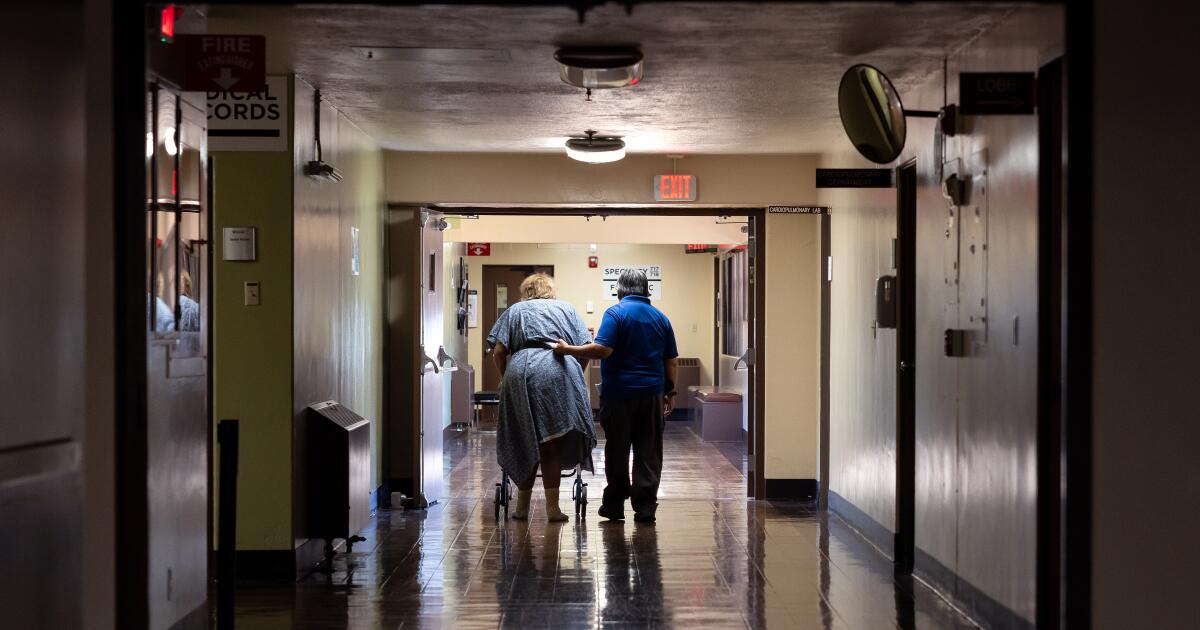At his job in an auto repair shop in downtown Dawson Creek, Nick Proach has just put the finishing touches on his latest creation—a scale replica of Skylab, the first U.S. space station.
The model's tiny solar panels, command module and telescope mount measure just 30 inches (76 centimeters), a small replica of the real Skylab, which is 100 feet (30.5 meters) long.
But it is built with millimeter precision, just like dozens of other mminiature spaceships filling the display cases around him.
“To orbit the Earth and go to the Moon… for me, that's probably the biggest, most exciting adventure of all time,” Proach says.
Proach has spent over 50 years recreating milestones of human spaceflight and creating custom models for major clients around the world.
He grew up in Toronto during the height of the 1960s space race, glued to the television as the first astronauts launched to new frontiers.
By age 10, he was building models from cardboard, plastic scraps, toothpicks and toy tires.
“I saw a photograph of the rover that was going to be used for the first time on the Moon during the Apollo 15 mission,” he recalls.
“I thought, ‘Hey, this is a neat, tidy little hot rod. I need to make myself one of these.”
A lifetime of watching astronauts explore new horizons motivated one British Columbian to build something extraordinary in an unexpected place. He built a new space museum in the center of Dawson Creek, in rural northeastern British Columbia. CBC's Matt Preprost learned more after speaking with Nick Proach.
His tiny models quickly grew and were soon on national television – in 1971 during coverage of the Apollo 15 moon landing and again in 1975 during the Apollo-Soyuz test project, when the American and Soviet crews shook hands in space.
“Basically, that’s what inspired me to keep doing it.”

Proach moved to British Columbia in the late 1970s and settled in the Lower Mainland. He worked in real estate, and space forced him to build models on a workbench.
By the mid-1980s, his reputation grew, bringing large orders to Expo 86 in Vancouver, including a 15-foot (4.5-meter) model of the US Freedom space station and a 28-foot (8.5-meter) version of Canada's proposed MSAT satellite.
Full employment
But Proach says that all changed in 1994, when he placed a small ad in an American magazine and attracted the attention of collectors, museums and aerospace contractors around the world.
Soon he had enough work to work full time. He hired a small team and created a company whose clients include NASA, the US Air Force and SpaceX.
“I thought maybe I’d get an extra commission,” he says.
“Things took off right away.”

Each model is created from original drawings and matches the actual spacecraft, down to the length of the antenna and the texture of the rocket panel.
Parts are designed in Virginia, printed in the Netherlands, and then shipped to Canada.
Canadian astronaut and retired Air Force Colonel Chris Hadfield, best known as the commander of the International Space Station, has focused his attention on writing since leaving active service. With three space missions under her belt, Hadfield is currently touring with her latest book, Last Orbit. CBC's Brittany Greenslade spoke with him about the stories, challenges and inspiration behind the new episode.
Few know Proach's craft better than Houston, Texas-based space historian Robert Perlman.
The two met at a National Space Society conference in Houston in 1999, where Perlman saw something he had never seen before: an eight-foot (2.4-meter) tall replica of the Saturn V rocket towering over an exhibitor's booth.
“You have to understand that this was long before 3D printing… there weren't kits that big,” says Perlman, the company's founder. collect SPACE.
“The old choice was you either go to Hollywood Prop or you go to Nick’s.”

Perlman's office has several Proach models, including the Canadarm.
“Not everyone can have a museum in their backyard that has a real Saturn 5, a real Apollo command module or a real lunar module. That's where scale models come in.”

Back at his museum, Proach takes visitors to a detailed Apollo 11 lunar module signed by Buzz Aldrin, a model he first built more than 50 years ago as a high school student.
Nearby is a detailed model of Artemis, NASA's next manned mission around the moon, scheduled to launch in February 2026 with a Canadian astronaut on board.
“We're adding more and more Canadian content to the museum because Canada has a very rich history in aerospace that no one knows about.”
In about four months, Jeremy Hansen will launch on the Artemis II mission. The space pioneer met with elementary school students visiting the Canadian Space Agency and answered their questions about the launch.
However, hidden among the artifacts is one of his most prized possessions: his own patch from his 2002 flight aboard Space Shuttle Atlantis.
It entered orbit with one of its astronaut training models, traveling more than 4.1 million miles (6.5 million kilometers) and 171 orbits before returning to it.
“I never heard a word about it—until a few months later, on a Friday night in December, this courier pulled up with an envelope,” he says.
“When I opened the envelope, there was a patch there, wrapped in cellophane, along with evidence that the crew had flown that crest during their mission.”

Proach and his wife Connie moved to Dawson Creek in 2020 to be closer to their children.
The historian hopes that young children who visit the museum will see his models and be inspired to build their own.
“Especially now, it’s vital to do this,” he says.
“To take them away from their phones, away from their computers and do something completely different, because that used to be their main activity. I mean, you did it all the time.”












